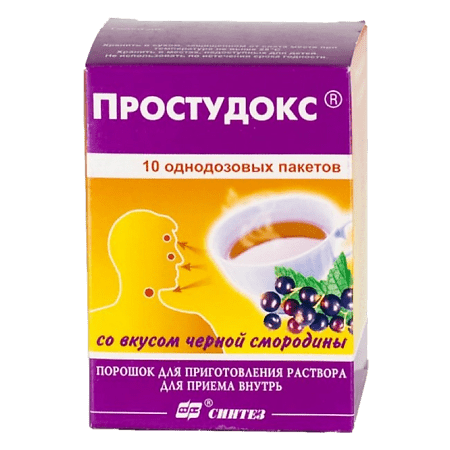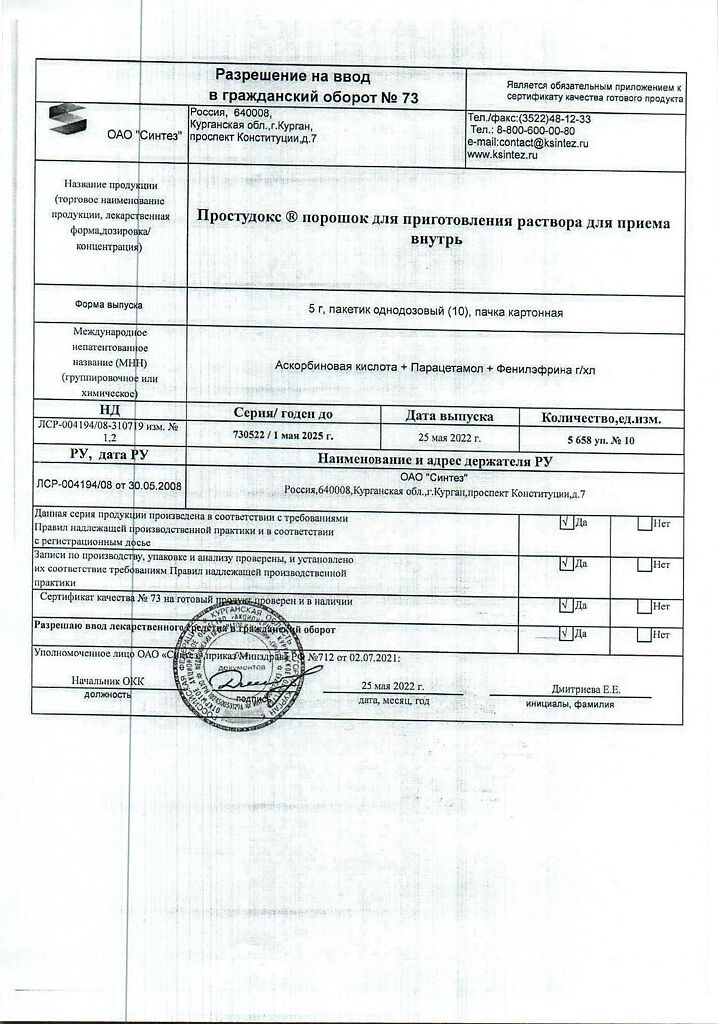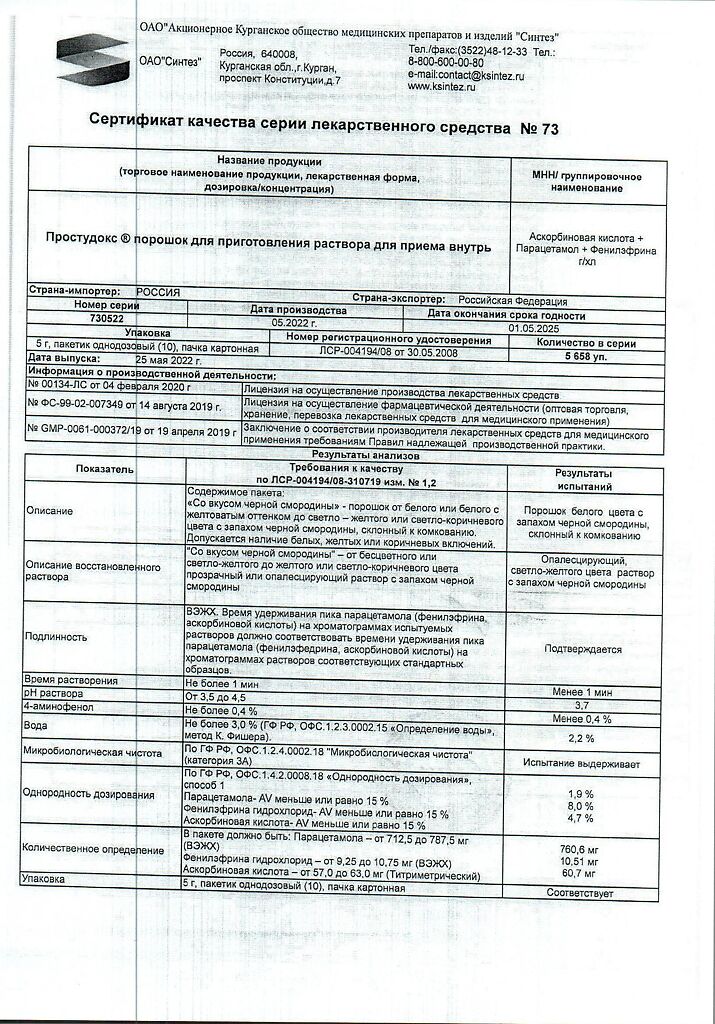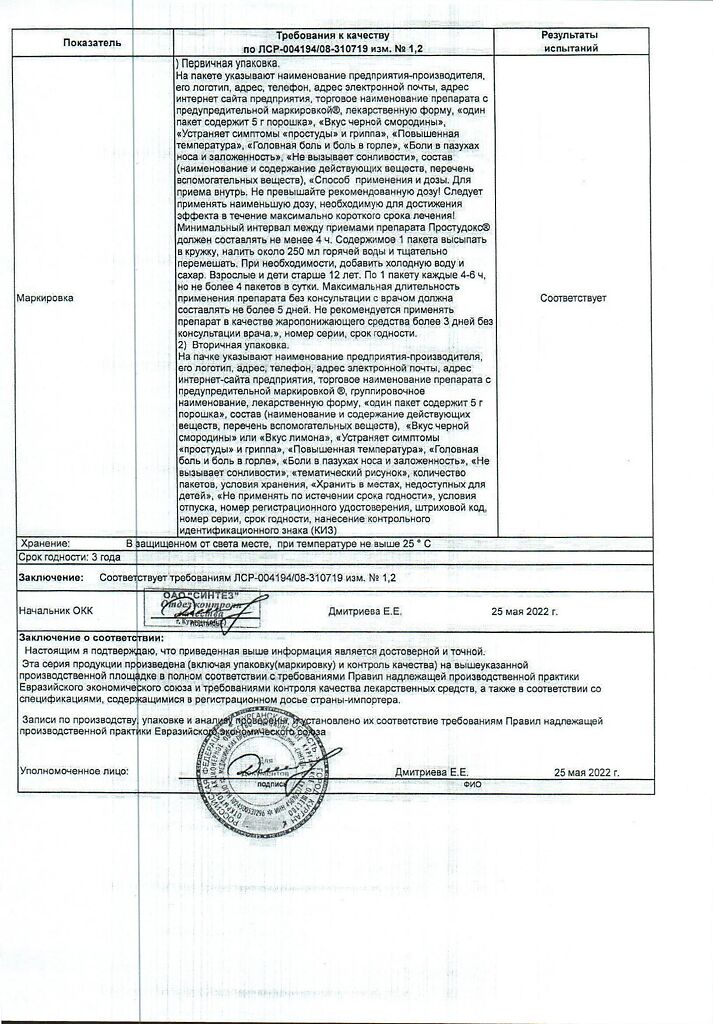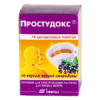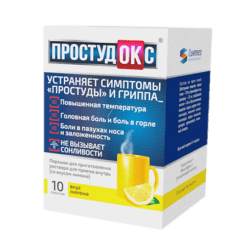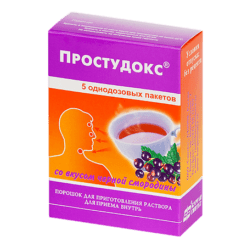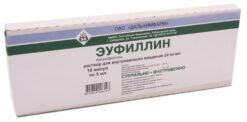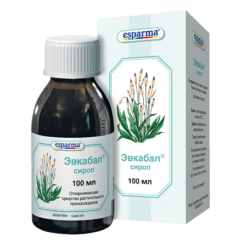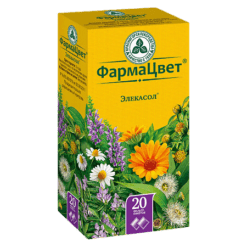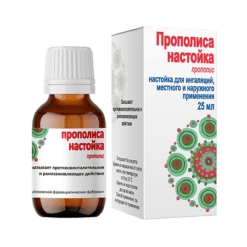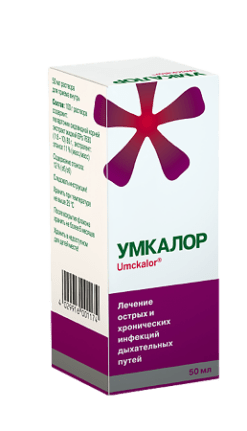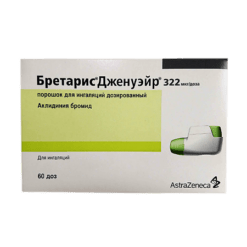No products in the cart.
Prostudox black currant, 5 g 10 pcs
€11.37 €9.48
Description
Prostudox Blackcurrant – replenishing vitamin C deficiency, sympathomimetic, analgesic, antipyretic.
Pharmacodynamics
Combination drug for symptomatic treatment of acute respiratory infections. It provides effective relief of symptoms of colds and flu.
The action of the drug is due to its constituent components.
Paracetamol has antipyretic and analgesic effect, reduces the body temperature and pain syndrome (sore throat, headache).
Phenylephrine is a sympathomimetic, constricts nasal vessels, eliminates swelling of the mucous membrane of the nasal cavity and nasopharynx, as a result of which the runny nose and nasal breathing are reduced.
Ascorbic acid (vitamin C) replenishes the increased need for vitamin C during colds and flu, especially in the initial stages of the disease.
The beginning of action 20-30 minutes after intake, the duration – 4-4.5 hours.
Indications
Indications
Cold and flu symptoms (including fever, headache, chills, nasal congestion, sore throat when swallowing).
Pharmacological effect
Pharmacological effect
Colds Black currant – replenishes vitamin C deficiency, sympathomimetic, analgesic, antipyretic.
Pharmacodynamics
Combined drug for symptomatic treatment of acute respiratory infections. Provides effective relief of cold and flu symptoms.
The effect of the drug is determined by the components included in its composition.
Paracetamol – has an antipyretic and analgesic effect, reduces elevated body temperature and reduces pain (sore throat, headache).
Phenylephrine is a sympathomimetic, constricts the vessels of the nose, eliminates swelling of the mucous membrane of the nasal cavity and nasopharynx, resulting in a decrease in runny nose and easier nasal breathing.
Ascorbic acid (vitamin C) – replenishes the increased need for vitamin C during colds and flu, especially in the initial stage of the disease.
The onset of action is 20–30 minutes after administration, duration is 4–4.5 hours.
Special instructions
Special instructions
You should not simultaneously use other drugs containing paracetamol, as well as other non-narcotic analgesics, NSAIDs (including metamizole, acetylsalicylic acid, ibuprofen), barbiturates, antiepileptic drugs, rifampicin, chloramphenicol.
The simultaneous use of other drugs should be agreed with a doctor.
The drug may interfere with the results of laboratory tests assessing the concentration of glucose and uric acid in plasma.
Impact on the ability to drive vehicles and operate machinery
When using Prostudox, the active components of the drug do not cause drowsiness and do not impair concentration.
Active ingredient
Active ingredient
Paracetamol, Phenylephrine, [Ascorbic Acid]
Composition
Composition
Active substances:
Pregnancy
Pregnancy
The use of the drug during pregnancy and breastfeeding is contraindicated. Breastfeeding should be stopped during treatment.
Use in children
Contraindicated: children under 14 years of age.
Contraindications
Contraindications
Hypersensitivity to the components of the drug;
diseases of the cardiovascular system (including severe aortic stenosis, acute myocardial infarction, tachyarrhythmia);
arterial hypertension;
diabetes mellitus;
prostatic hyperplasia;
angle-closure glaucoma;
thyrotoxicosis;
pheochromocytoma;
pregnancy;
lactation period;
children’s age (up to 14 years);
simultaneous use of tricyclic antidepressants, beta-blockers, MAO inhibitors (and a period of 14 days after their discontinuation);
simultaneous use with other paracetamol-containing drugs.
With caution:
renal/liver failure;
congenital hyperbilirubinemia (including Gilbert, Dubin-Johnson and Rotor syndrome);
COPD;
deficiency of glucose-6-phosphate dehydrogenase;
blood diseases;
elderly patients.
Side Effects
Side Effects
Allergic reactions: sometimes – skin rash, itching, urticaria, angioedema.
From the hematopoietic system: rarely – thrombocytopenia, leukopenia, agranulocytosis.
From the digestive system: rarely – nausea, vomiting, epigastric pain.
Other: rarely – increased intraocular pressure, urinary retention.
With long-term use in excess of the recommended dose, hepatotoxic and nephrotoxic effects may occur.
Phenylephrine hydrochloride may cause nausea, headache, and increased blood pressure; rarely – palpitations. These symptoms disappear after discontinuation of the drug.
Interaction
Interaction
Stimulators of microsomal oxidation in the liver (including phenytoin, ethanol, barbiturates, rifampicin, phenylbutazone, tricyclic antidepressants) increase the production of hydroxylated active metabolites of paracetamol, which makes it possible to develop severe intoxications with small overdoses.
Inhibitors of microsomal oxidation (cimetidine) reduce the risk of hepatotoxicity of the drug.
Paracetamol enhances the effects of MAO inhibitors, sedatives, ethanol.
With the simultaneous use of Prostudox with ethanol, the development of acute pancreatitis is possible.
With the simultaneous use of Prostudox with antidepressants, antiparkinsonian, antipsychotic drugs, phenothiazine derivatives, the risk of urinary retention, dry mouth, and constipation increases.
With the simultaneous use of Prostudox with GCS, the risk of developing glaucoma increases.
When used simultaneously with Prostudox, the hypotensive effect of guanethidine is reduced.
With simultaneous use of Prostudox with guanethidine, the α-adrenergic stimulating effect is enhanced, and with tricyclic antidepressants, the sympathomimetic effect of phenylephrine is enhanced.
Simultaneous use with Prostudox reduces the effectiveness of uricosuric drugs.
When gastric emptying slows down (under the influence of propantheline), a delayed onset of the drug’s effect may occur. By accelerating gastric emptying (after taking metoclopramide), the drug begins to act faster.
A cold can enhance the effect of indirect anticoagulants.
Overdose
Overdose
Symptoms: discomfort in the epigastric region, nausea, vomiting, pallor of the skin, loss of appetite, hepatonecrosis (the severity of necrosis directly depends on the degree of overdose), increased activity of liver transaminases, increased prothrombin time (12–48 hours after administration). The full clinical picture of liver damage appears after 1–6 days. Rarely, liver dysfunction develops suddenly and can be complicated by renal failure (renal tubular necrosis).
Treatment: symptomatic, gastric lavage, administration of SH-group donors and precursors for the synthesis of glutathione – methionine 8-9 hours after an overdose and N-acetylcysteine after 12 hours. The need for additional therapeutic measures (further administration of methionine, intravenous administration of N-acetylcysteine) is determined depending on the concentration of paracetamol in the blood, as well as on the time elapsed after its administration.
Storage conditions
Storage conditions
In a dry place, protected from light, at a temperature not exceeding 25 °C.
Keep out of the reach of children.
Shelf life
Shelf life
3 years.
Manufacturer
Manufacturer
Sintez, Russia
Additional information
| Shelf life | 3 years. |
|---|---|
| Conditions of storage | In a dry, light-protected place at a temperature not exceeding 25 °C. Keep out of reach of children. |
| Manufacturer | Sintez OAO, Russia |
| Medication form | Powder for preparation of solution for oral administration |
| Brand | Sintez OAO |
Other forms…
Related products
Buy Prostudox black currant, 5 g 10 pcs with delivery to USA, UK, Europe and over 120 other countries.

